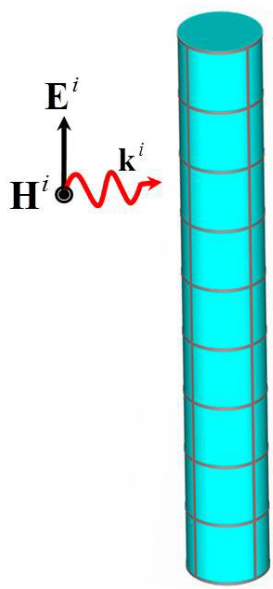‘Metascreen’ forms ultra-thin invisibility cloak
March 27, 2013
Invisibility cloaks put forward by scientists have been fairly bulky contraptions.
Now University of Texas at Austin researchers have developed a cloak that is just microns thick and can hide 3D objects from microwaves in their natural environment, in all directions and from all of the observers’ positions.
The trick: a new, ultrathin layer called a “metascreen,” made by attaching strips of 66-micron-thick copper tape to a 100-micron-thick, flexible polycarbonate film in a fishnet design. It was used to cloak (hide) an 18 cm cylindrical rod from microwaves.
It showed optimal functionality when the microwaves were at a frequency of 3.6 GHz, and worked over a moderately broad bandwidth (3.3 — 3.9 GHz).
The researchers predict that due to the inherent conformability of the metascreen and the robustness of the proposed cloaking technique, oddly shaped and asymmetrical objects can be cloaked with the same principles.
Objects can be detected when electromagnetic radiation (light, x-rays, microwaves, etc.), or other types of energy, such as sound, rebound off its surface. Previous cloaking studies have used metamaterials to refract (bend) the incoming waves around an object. The new “mantle cloaking” method uses instead an ultrathin metallic metascreen to cancel out the waves as they are scattered off the cloaked object.
“When the scattered fields from the cloak and the object interfere, they cancel each other out and the overall effect is transparency and invisibility at all angles of observation,” said co-author of the study Professor Andrea Alu.
“The advantages of the mantle cloaking over existing techniques are its conformability, ease of manufacturing, and improved bandwidth. We have shown that you don’t need a bulk metamaterial to cancel the scattering from an object — a simple patterned surface may be sufficient and, in many regards, even better than a bulk metamaterial.”
Last year, the same group of researchers were the first to successfully cloak a 3D object, using a method called “plasmonic cloaking”, which used more bulky materials to cancel out the scattering of waves.
One of the key future challenges for the researchers will be to use “mantle cloaking” to hide an object from visible light. “In fact, metascreens are easier to realize at visible frequencies than bulk metamaterials and this concept could put us closer to a practical realization,” said Alu.
“However, the size of the objects that can be efficiently cloaked with this method scales with the wavelength of operation, so when applied to optical wavelengths [which are much smaller than microwave wavelengths], we may be able to efficiently stop the scattering of micron-sized objects, but not larger.
“Still, we have envisioned other exciting applications using the mantle cloak and visible light, such as realizing optical nanotags and nanoswitches, and noninvasive sensing devices, which may provide several benefits for biomedical and optical instrumentation.”
